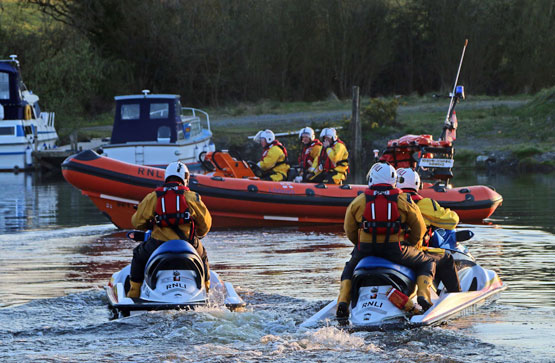#RNLI - Enniskillen RNLI rescued two people on Sunday evening (27 September) after a kayak was reported to have capsized at the mouth of the Colebrook River.
The volunteer lifeboat crew based on Upper Lough Erne at Carrybridge were requested by Belfast Coastguard to launch both their inshore lifeboat and rescue water craft (RWC) at 5.52pm.
The man and woman who came off the kayak had managed to swim ashore, raise the alarm using their mobile phone and let the coastguard know they were on an island.
The inshore lifeboat, helmed by Chris Cathcart, launched immediately along with the RWC. Weather conditions at the time were described as good with light airs and good visibility.
Following a search, the lifeboat crew located the casualties on the northern side of Inishcorkish Island. They were both cold and the woman was shaking and showing signs of hypothermia.
The crew immediately transferred both people to the lifeboat and began to administer casualty care. They were then brought to the shore at Knockninny Marina where they were medically assessed and made comfortable. The RWC then recovered the vessel back to Knockninny Marina.
Speaking following the callout, Enniskillen RNLI helm Chris Cathcart said: "The water was cold yesterday and the casualties had been in the lough for about 15 minutes during their swim to the island.
"They had prepared for their trip by carrying a means of communication and thankfully they were able to raise the alarm using their mobile phone. We wish them both a speedy recovery from their ordeal."
As reported on Afloat.ie earlier today, HM Coastguard is co-ordinating an ongoing search for an overdue sea kayaker off Portmuck in Co Antrim, concentrating on the area around the Gobbins coastal path.































































